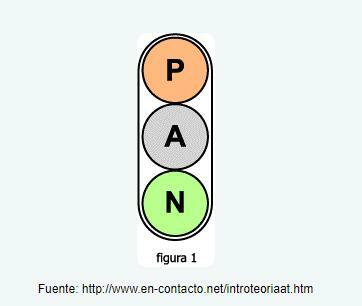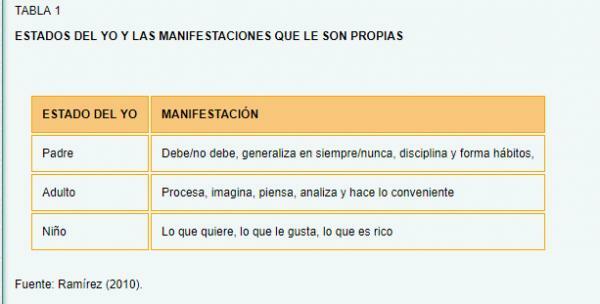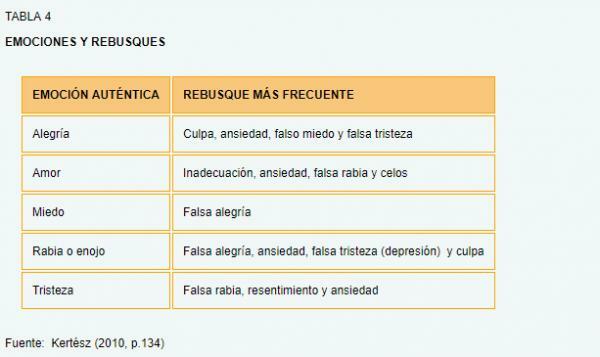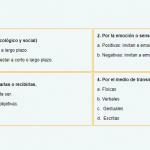
In a general sense, Organizational Behavior (OC) according to Chiavenato (2009) refers to “the actions of the people who work in the organizations”(P.06). However, Robbins and Judge (2009) define it as the study of what people do in an organization and how their behavior affects its performance.
It covers indicators related to employment, such as: motivation, leadership, interpersonal communication, structures and processes of group, learning, development and perception of attitudes, change processes, conflicts, work design and work tension, among others.
In this PsychologyOnline article, we will talk about the ETheoretical Approaches to Organizational Analysis - Organizational Behavior (OC)
Index
- The concept of Organizational Behavior (OC)
- Transactional analysis I
- Transactional analysis II
- Transactional analysis III
- Transactional analysis III
- Transactional analysis IV
- The proposal
The concept of Organizational Behavior (OC)
To support this premise and according to Dubrin (2004), the meaning of organizational behavior is the
It also proposes that main objectives of the OC they are to explain it, predict it and control it. Also, Chiavenato (2009), relates organizational behavior with various processes and competencies such as: Organizational differences and personality, motivation, decision making, communication, leadership, learning and training, teamwork, stress management and negotiation.
For their part, Franklin and Krieger (2011) identify the following CO characteristics:
- Provides an option to do performance evaluations;
- implements the necessary corrective measures;
- it is multidisciplinary;
- objectively promotes the transmission of ideas, information and emotions;
- it can be equivalent to a feedback that in turn can serve to improve working conditions;
- facilitates decision-making and explains the relationship of values and work in the decision-making of the organization.
Keeping this same focus, Robbins and Coulter (2005) mention that OC focuses on two main areas. Individual behavior and organizational behavior. However, they also indicate that OC is related to group behavior, which includes: norms, roles, team building, leadership and conflict.
Organizational Behavior is characterized by representing a method to promote communication and emotions. In the same way, it is an adequate mechanism to provide feedback, adjust and improve working conditions; a way to apply methods and technologies that facilitate effective decision-making and an alternative to undertake the corrective actions deemed necessary. Franklin and Krieger (2011).
Keeping the same relationship, another interesting related topic is exposing the types of organizational behaviors. According to Robbins and Judge (2009), the main dependent variables in OC are: productivity, absenteeism, turnover and job satisfaction. However, recently two more variables have been added to this list, behavior that deviates from workplace norms and organizational citizenship. An interesting topic mentioned by Gonzáles and Olivares (2006), as well as Robbins and Judge (2009) is that, to explain the behavior of workers within an organization, requires a multidisciplinary work, which ideally intervene: administrators, psychologists, pedagogues and communicators, through three different levels: individual, in groups and the organizational system itself.
When analyzing these studies, the inherent relationship that exists between human behavior and organizational behavior. For this reason, a theory of human behavior is proposed below that, when studied and put into practice, can provide professionals with a wide range of advantages in terms of understanding and continuous improvement of the field of Resources Humans.
Transactional analysis I.
Initially, it is recognized that Transactional Analysis (AT) is a theory and technique of individual and social psychology created by psychiatrist Eric Berne in the 1950s in the United States. In Guatemala, the forerunner of TA is Dr. Rolando Paredes, who has worked as a didact in the training of professionals and interested in this new science of behavior through the organization of congresses, conferences, seminars, lectures, forums and chairs. The first personal approach with the TA began in 2003 in a training prior to the First Latin American Psychotherapy Conference, held in November of that year.
It is called "Analysis" because separates the behavior into units easily observable and “Transactional” by focusing more on what happens between people, that is, way of communicating thoughts and emotions between two or more individuals, as well as the way of behave. (Kertész, 2010).
Vallejo (2001), takes Transactional Analysis as a psychological model that presents the human being as a "reproduction" of himself and their ways of interacting. In the same way, this author indicates that this analysis is a method that provides techniques that facilitate the achievement of life goals.
It is considered that the success of this theory lies in its characteristics, explains Kertész (2010). For example, it manages to explain the complexities of human behavior with simple, everyday language, without losing its scientific character. This facilitates their understanding and communication. On the other hand, its concepts are objective and verifiable, which guarantees that knowing how to observe a person's behavioral signs (words, tones of voice, looks, gestures, etc.), you can have at your disposal enough information about what is happening internally people.
Additionally, the philosophy of this theory is humanistic, which provides the opportunity to have a deep knowledge of the human being, with characteristics and intellectual, emotional and behavioral Likewise, Vallejo (2001) says that because it is a humanist, the TA "promotes the development and expression of our human potentialities." (P. 24).
Another of its characteristics is that the entire technique is diagrammable. The theoretical concepts of it are representable through simple graphics such as circles, triangles, vectors and squares, which facilitates the understanding of complex processes.
In the same line, it is considered contractual, This means that people are free to set objective and clear goals in mutual agreement with the therapist or facilitator. According to Vallejo (2001), “everything that is worked on in Transactional Analysis is based on contracts or agreements”, which, according to this author are “… a commitment” that clearly defines “… .the objective to be achieved and the means to achieve it ”. (P. 32).
It is worth mentioning that within an entertaining and motivating context, it is a social learning model. And although it is an initially psychological theory, it does not focus on mental illness. In addition to the above, it is considered that this technique is integrable in that it can be combined with other techniques, methods or other psychological models.
Finally, TA prevents and is effective, due to its characteristic of being predictable. This ensures that what would be spent on long and expensive processes can be saved. (Kertész, 2010).
The proposal of the forerunner of Transactional Analysis in Latin America, Roberto Kertész turns in around being able to evaluate people and processes through the use of one or more of its ten instruments.
According to Paredes, an instrument from the TA point of view “consists of a basic concept or a series of concepts interrelated with specific application techniques. All the instruments (ten) describe the behavior of the individual or a group, at a given moment, but from different points of view or levels. They form a system of interrelated elements. Thus, by modifying any element of the system of the ten instruments, modifications are produced in all the rest ”. (Ramírez, 2004, p. 21)
The application of these ten instruments, in isolation or in combination, is the recommended model by Paredes, (cited by Ramírez, 2010) to make a diagnosis with Transactional Analysis. In practice, it has been discovered that in addition to being diagnostic, TA instruments have multiple uses at a clinical, educational and organizational level due to its mentioned characteristics previously.
Based on the theory of Kertész (2010), and multiple chairs taught by Doctor Rolando Paredes, below is a review of the ten instruments of the TA:

Transactional analysis II.
Personality scheme
This scheme is explained through three structures or states of the I: Parent, Adult and Child (PAN) and its structural and functional analysis.
It is worth mentioning that Berne, cited by Vallejo (2001) defines the states of the self as a “coherent system of thoughts and feelings manifested by corresponding patterns of behavior”. (p. 50).
Sáez (2001), for his part, defines the states of the Self as follows:
The Father is the result of "verbal and non-verbal recordings of the parental figures" between 5 and 8 years. The function of this state is to transmit culture, traditions, advice, habits and behaviors and acts by "moralizing" in a stereotyped and dogmatic way.
The Adult is the analytical part, rational and logical personality that processes the information that is received objectively. These characteristics help the Adult to "reflect, think and decide or issue the best possible response in each situation."
The Child is basically made up of the necessitiess, feelings and emotions of the individual. It is the most archaic form of personality. (P. 41). This same author indicates that "if the Father is what has been learned and the Adult is what is thought and reasoned, the Child is what is felt" (p. 41). The following diagram illustrates the ideas discussed above:
In addition to the structural analysis of the states of the I, the functional manner of these states is presented: In the Father state there is the Critical Father (PC) and the Nutritive Father (PN). In the Child (N) is the Free Child (NL), Submissive Child (NS) and Rebel Child (NR). (Kertész, 2010). The Adult does not undergo any change.

Transactional analysis III.
The analysis of Transactions or ways in which people carry out social exchanges
Berne (1979) defines the Transaction as "The unit of social action" (p. 35) where each of the participants gains something from it. Likewise, he mentions that everything that happens between two or more people can be broken down into individual transactions, which gives an advantage to the person who analyzes them by converting it into a unit system. Vallejo (2001) defines a transaction as a stimulus and a response in communication. These can be verbal or non-verbal.
When we respond to someone or ask a question, we can analyze from which state of the ego the stimulus or Well to which it is directed, I can also analyze which state of the I the response is directed and to which state directed. Transactions can be classified into: Complementary or simple, when the answers are as expected. Transactions crusades, which are evidenced when the stimulus and the response intersect, that is, communication is blocked by exchanging various states of the I in this process. Finally you find the subsequent transaction, in which there are double messages, one socially accepted and the other hidden. In this type of transaction more than two states of the I intervene.
The caresses or social reinforcements
For Berne According to Sáenz (2001), a Caress "It is a unit of recognition". Sáenz emphasizes saying that for Transactional Analysis a caress is any type of recognition of existence, which emphasizes the importance of physical, verbal and other contact. This author comments that when analyzing the Caresses, "we try to describe the incentives and satisfactions produced by the interaction between the person, the living being and the human environment that surrounds him." (p. 81) Kertész (2010) classifies Las Caricias as follows:
- For its influence on physical, psychological and social well-being
- For the emotion or sensation that they invite to feel
- For the requirements or conditions to give or receive them
- By transmission medium
The structuring of time
and his six ways to handle it. Berne, according to Sáenz (2011), affirmed that just as the human being has the need for recognition, he also manifests a need to structure or schedule time. Transactional Analysis proposes 6 ways of structuring time, all with the same purpose, receiving some kind of caresses: Below is an explanatory table of these 6 ways of structuring the weather.

Transactional analysis III.
Psychological games
Which initiate with an inappropriate transaction and they tend to recur throughout life. Games have the tendency to end with "profit" or defined psychological payment that at the end always leaves a negative feeling among the "players", due to the negative caresses that are always given / received.
Berne, cited by Sánz (2001), defines games as “a series of subsequent, complementary transactions that progress to a well-defined and anticipated outcome. Descriptively, it is a set of recurring transactions, frequently verbose, superficially plausible, with a hidden motivation ”that is,“ a series of plays with a trap or trick ”, (p. 117). One of the most powerful advantages of games is the ability to identify them, A person who has received some training in this subject, has the ability to specify the presence of a game through several tracks. Among them, it is important to highlight this formula to facilitate identification:
Bait + Weakness Response Change Final Profit
Source: Kertész (2010, p.155)
There is also another way to analyze psychological games. It is a contribution by Karpman cited by Kertész (2010), who establishes a "Dramatic Triangle" with three roles in the games: persecutor, savior and victim. He explains that they are false and changing roles learned from childhood.
However, from either of these two analyzes, all games have, according to Ramírez (2010), two elements: “a social one, which is the most acceptable and a psychological one, which is unconscious and unacceptable socially. Games can be played between two or more people. At the end of the game there will always be a well-defined profit or result. Games usually begin with a disqualification ”(p. 55)
Emotions
Which are divided into authentic and substitute and they are part of the emotional components of the human being. Emotions are a manifestation of available energy and are characterized as "a secondary effect of a moment of reality." (Ramírez 2010) (p. 48). Berne, according to Ramírez (2010), divides emotions into: Authentic and substitute (or gimmicks). The authentic emotions are 5: Fear, Love, Rage or anger, Sadness and Joy.
While a search is a substitute emotion, inadequate, promoted or substituted since childhood, which replaces the authentic emotion, ignored or prohibited since then (Kertézs 2010). Below is a table showing the authentic emotions accompanied by the most frequent searches for each one:

Transactional analysis IV.
Life Argument
Which is manifested in the "script" or unconscious programming versus autonomy of decisions or life goals. According to Vallejo (1988), the argument is a “plan about one's own life more or less foreseen from childhood” (p.130). According to Berne, cited by Ramírez (2010), the argument is a longitudinal life plan formed by "Mandates" and decisions, based on parental influences that are later forgotten and repressed.
Berne also establishes the following mandates: Do not live, do not enjoy, do not think, do not grow, do not feel, do not exceed me, hurry to grow, do not be yourself, do not achieve, do not do.
Although this theme has a more psychological and pathological perspective, It is considered important to include in this proposal because the argument is not only identified at the individual level but also at the level of groups and organizations. In this sense, the argument is considered to be directly related to the organizational culture.
Mini-plot
or repetitive sequence of individual behaviors based on socially acceptable misconceptions.
In practice it has been observed that this is the instrument that is run to check that a person is following the command, that is to say that they are behaviors that serve as a guarantee for the fulfillment of the argument.
According to Kahler, cited by Kertész (2010), there are 5 drivers, which, as the word indicates, drive the beginning of inappropriate behaviors to fulfill the argument. These are: “Be perfect, be strong, hurry up, indulge, and try harder. Kertész (2010) clearly defines the miniargument as the theory that studies “the process that reinforces the contents of the argument, second by second and transaction by transaction”. (p. 202).
Group dynamics
Which provides the structure and operation of small groups and its stages of development. According to Kertész (2010), a group “is any social aggregate with an external limit, which is what separates the members of the group from those who are not; and at least one internal limit, which is what separates the leader from the members and the leaders from each other ”. (p. 206) This same author, based on studies by Thomas Clary and Berne, mentions 6 basic elements that should be considered in the study of a group: the external apparatus, the internal apparatus, leadership, group culture, conditions for group functioning and the work of the group.
Likewise, Kertesz suggests that for the systemic analysis of a group, it is necessary to have information for the preparation of 6 diagrams related to: Organizational structure, location or public structure, authority, imago (i.e. mental image that a person is formed from a group before entering it), group dynamics and transactions between the ego states of the participants.
When taking into account the reviewed topics, it can be observed that the Transactional Analysis has the characteristics and sufficient inputs to be able to evaluate in an effective way all manifestations of human behavior. There is a whole range of scientific evidence that supports this claim through practices in clinical, educational and organizational level cases.
If the exposed at the beginning of this work is retaken, it can be observed that, if the organizational behavior depends on and affects the individual and group behavior of the employees, TA can be a functional tool in this type of analysis at the organizational level. This means that it can be applied in carrying out diagnoses, in work situations and inconveniences that may arise, individually, as a team, and in the work environment.
In the same way, a very interesting data was observed: Transactional Analysis and Organizational Behavior, have the following similarities: They are applicable with the scientific method; they can work with individuals, groups and organizations; They work contingently, that is, there must be a plan when a specific situation arises; they are tools to support the management of processes and people; and, they are enriched with the contribution of various behavioral sciences, due to their multidisciplinary nature.
From this account, it is concluded that due to the complementary nature that is perceived between these theories, the following is carried out proposal, which can be used, and verified, by professionals interested in human behavior and organizational.
The proposal.
This consists of relate each of the instruments provided by the TA to the different areas that comprise the organizational behavior, so that each instrument can become a functional tool for praxis in the field of human resources.
On a personal level and in professional practice, it has proven to be beneficial and continuous learning the application of each of these ten tools in the different processes that make up the human resources system. For example, employee motivation is closely linked to the Caress system proposed by the TA. In other words, knowing the type of benefit that employees require to feel recognized within the organization, the starting point is identified so that the human management department can carry out planning strategic.
For this reason, and without the desire to convince, but to motivate experience a different form of managerial empowerment, This proposal is presented in which objective, functional and applicable knowledge are exposed in the planning and execution of continuous improvement strategies in organizations.
However, it is considered important to state that consolidating knowledge about TA, as well as the processes that are handled in the organizational field, requires a thorough study and constant training. For this reason, it is recommended to consider that a determining factor in this proposal is deep knowledge of these theories, as well as previous experience in the application of this knowledge in the professional field.
It is hoped that this proposal will have the opportunity to be subjected to scientific verification with in order to validate it and expose it as a work tool to Resource professionals Humans.
In conclusion, in a competitive world, where the demand on the results of organizations is prevailing to At all levels, these theoretical approaches related to the analysis of human behavior and organizational. It is considered important to submit this issue to the execution of strategic plans in order to facilitate and empower the performance of human management departments.

This article is merely informative, in Psychology-Online we do not have the power to make a diagnosis or recommend a treatment. We invite you to go to a psychologist to treat your particular case.
If you want to read more articles similar to Theoretical Approaches to Organizational Analysis - Organizational Behavior (OC), we recommend that you enter our category of Management and business organization.
Bibliography
- Berne, E. (1979). What do you say. After saying Hello. Barcelona: Grijalbo.
- Chiavenato, I. (2009). Organizational behavior. (2ª. Ed.). Mexico: Mac Graw Hill.
- Dubrin, A. (2004). Fundamentals of organizational behavior. (2ª. ed.). Buenos Aires, Argentina: Thomson.
- Franklin, E. and Krieger, M. (2011). Organizational behavior: Approach to Latin America. Mexico: Pearson Education.
- González, M., and Olivares, S. (2006). Organizational behavior: A Latin American approach. (8ª. Reprint.). Mexico: Cecsa.
- Kertész, R. (2010). Integrated Transactional Analysis. (4ª. Ed.). Argentina: UFLO.
- Ramírez, E. (2004). Theoretical Foundations of Transactional Analysis as a Diagnostic Model. Origin of the Psychotherapeutic Process. Guatemala (Thesis) University of San Carlos de Guatemala.
- Robbins, S., Coulter, M., Huerta, J., Rodríguez, G., Amaru, A., Varela, R., and Jones, G. (2009). Administration: A competitive entrepreneur. (2ª. ed.). Mexico: Pearson Custom Publishing.
- Robbins, S. & Judge, T. (2009). Organizational behavior. (13ª. ed.). Mexico: Pearson Education.
- Sáenz, R. (2001). Psychological Games according to Transactional Analysis. Madrid: Editorial CCS.
- Vallejo, J. (1988) Living is self-realization. Barcelona: Editorial Kairós.
Photos of Theoretical Approaches to Organizational Analysis - Organizational Behavior (OC)



